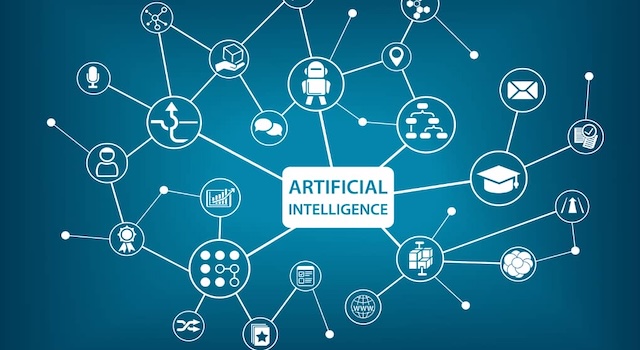Artificial Intelligence
Agentic AI Integration Playbook: How to Modernize Legacy Enterprise Systems for Autonomous Intelligence

Agentic AI can only reach its potential when it’s integrated across the entire enterprise ecosystem. But for many organizations, legacy systems — from ERP and CRM to mainframes and on-premise databases — stand in the way of autonomy. This playbook offers a step-by-step roadmap for integrating agentic AI into existing infrastructure, transforming static workflows into intelligent, self-managing systems.
The integration challenge: autonomy meets legacy
Most enterprise systems weren’t designed for autonomy. They rely on deterministic workflows, manual oversight, and static APIs. Agentic AI requires flexibility — real-time access to data, event-driven architectures, and bi-directional feedback loops. Bridging the two worlds requires both technical and cultural transformation.
- Data silos: Disconnected systems hinder AI visibility and decision accuracy.
- Rigid workflows: Hardcoded logic prevents dynamic, AI-driven optimization.
- Limited API access: Legacy systems often lack modern integration interfaces.
- Security bottlenecks: On-prem systems can limit safe AI connectivity to external agents.
Principles of AI-ready integration
- Interoperability first: Ensure that systems communicate seamlessly through APIs, event streams, and middleware.
- Cloud-edge balance: Use hybrid architectures to support both real-time AI decisions and on-prem security needs.
- Composable enterprise design: Modularize systems so AI can access and manage specific functions autonomously.
- Continuous feedback loops: Feed agentic AI outcomes back into business systems for adaptive learning.
- Governance embedded by design: Integrate compliance, access control, and explainability into every AI connection point.
Step-by-step agentic AI integration roadmap
- Step 1: Conduct a system audit — Identify systems with integration bottlenecks, outdated APIs, or isolated data silos.
- Step 2: Create a unified data layer — Implement data fabric or lakehouse architecture to centralize access without centralizing storage.
- Step 3: Deploy API gateways — Use tools like MuleSoft, Apigee, or Azure API Management to expose legacy functions securely.
- Step 4: Introduce automation middleware — Integrate AI orchestration layers (e.g., Zapier, UiPath, n8n, or Camunda) to connect data flows.
- Step 5: Train AI agents incrementally — Begin with rule-based tasks before expanding autonomy into multi-agent ecosystems.
- Step 6: Monitor and refine continuously — Use observability dashboards to track decision accuracy, latency, and compliance.
Technologies enabling agentic AI integration
- Microsoft Azure Synapse + OpenAI Services: Connect data warehouses and intelligent agents via API orchestration.
- Databricks Lakehouse: Provides a unified data platform for model training, inference, and real-time decision support.
- IBM watsonx Orchestrate: Combines AI workflow automation with enterprise security and governance controls.
- UiPath AI Center: Integrates automation with machine learning agents for adaptive enterprise workflows.
- AWS Bedrock + EventBridge: Powers event-driven AI agent communication between cloud and on-prem systems.
Modernization strategies for legacy environments
Enterprises don’t have to replace legacy systems overnight. Instead, they can adopt a phased modernization strategy that layers autonomy on top of existing infrastructure.
- Encapsulation: Wrap legacy functions with APIs that expose their capabilities to AI systems.
- Federation: Use data virtualization to let AI query data across multiple systems without duplication.
- Augmentation: Deploy AI agents that observe, recommend, and eventually automate select functions.
- Replatforming: Move critical workloads to hybrid cloud environments for scalability and interoperability.
Measuring integration success
- System interoperability rate: % of core systems accessible via API or event stream.
- Data latency: Time required for agents to access and process live information.
- Automation coverage: Share of workflows executed autonomously by AI agents.
- Error reduction: Decrease in human errors due to AI-managed coordination.
- ROI velocity: Time from integration to measurable business value realization.
Best practices for secure integration
- Zero-trust architecture: Validate all agent requests regardless of origin.
- Data encryption: Secure in-transit and at-rest information through TLS and tokenization.
- Access segmentation: Limit agent access by task, department, and data category.
- Audit logging: Maintain immutable logs for every agent action and decision.
- Ethical guardrails: Apply governance frameworks to prevent unauthorized decision-making or bias.
Common integration pitfalls to avoid
- Over-centralization: Relying on a single AI model or data hub can create bottlenecks and risk.
- Ignoring culture change: Integration success requires employee buy-in and AI literacy training.
- Neglecting governance: Failing to align technical integration with ethical oversight.
- Premature autonomy: Granting AI agents too much control before governance maturity is established.
FAQs
How do you integrate agentic AI with legacy systems? Through APIs, automation middleware, and data fabrics that bridge old and new infrastructure.
Can legacy software support autonomous AI agents? Yes, with encapsulation, modernization, and event-driven architectures that expose legacy functions to AI ecosystems.
What’s the first step in AI system integration? Conducting a thorough system audit to identify bottlenecks and prioritize API modernization.
Is agentic AI integration secure? When built with zero-trust design, encryption, and continuous governance, agentic AI can safely integrate with enterprise systems.
Bottom line
Integrating agentic AI into legacy enterprise systems is less about replacement and more about evolution. By layering autonomy, interoperability, and governance onto existing infrastructure, organizations can unlock self-optimizing, adaptive workflows — without abandoning their technological foundations.






